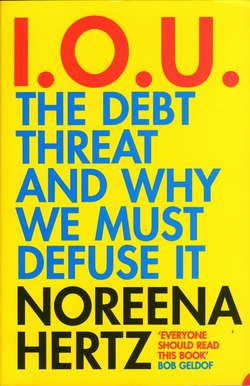Читать книгу IOU: The Debt Threat and Why We Must Defuse It - Noreena Hertz - Страница 9
It’s a Cold War
ОглавлениеAt no time in recent history have loans been proffered as ‘generously’ as during those not so distant days of the Cold War. A money-for-influence circus with China, the Soviet Union and the United States all pursuing Communism around the ring. A time of two political and economic ideologies and three camps – the capitalist bloc under the auspices of the United States, and the Chinese and Soviet socialist blocs – with each camp seeking to win the allegiance of the greatest number. A time when loans to countries and regions shot up in direct proportion to their perceived geopolitical influence or ideological loyalties and when loans were used as a means of securing powerful allegiances and ensuring political stability.
In 1960, for example, when South Asia and the Far East were perceived as the main ‘red threats’, 50 per cent of all US aid (loans and grants) was sent to key ‘domino’ countries like South Korea, Vietnam, Thailand, India, Pakistan and Iran. Between 1945 and 1952, when the Soviet penetration of Europe was perceived by the Americans as their greatest threat it was Europe that received $13.3 billion in US aid, (in that case mainly grants) while other regions had to make do with significantly less.
The Bay of Pigs fiasco, in which the US attempted and failed to overthrow the Communist regime of Fidel Castro, moved Latin America onto America’s list of preferred borrowers. In a. speech soon after the invasion, John F. Kennedy spoke of ‘the struggle in many ways more difficult than war…a struggle…taking place every day, without fanfare, in thousands of villages and markets…and in classrooms all over the globe.’ A struggle which needed, Kennedy believed, foreign financial assistance to win. Why? Not for the sugar-coated reasons laid out in his inauguration speech only a few months before.
‘To those people in the huts and villages of half the globe struggling to break the bonds of mass misery, we pledge our best efforts to help them help themselves, for whatever period is required, not because the Communists may be doing it, not because we seek their votes, but because it is right.’
But, rather, because if the Americans didn’t provide loans, ‘the reds’ would. As Kennedy proclaimed later, in an address at the Waldorf Astoria on a blustery winter night just weeks after the resolution of the Cuban Missile Crisis:
‘Less than a month ago this Nation reminded the world that it possessed both the will and the weapons to meet any threat to the security of free men. The gains we have made will not be given up, and the course that we have pursued will not be abandoned. But in the long run, that security will not be determined by military and diplomatic moves alone…Aid is a method by which the United States maintains a position of influence and control around the world and sustains a good many countries which would definitely collapse or pass into the Communist bloc…Really I put it right at the top of the essential programs in protecting the security of the free world.’
And, indeed Latin America’s external debt increased from $12.6 billion (thousand million) to $28.9 billion between 1960 and 1970, a 230 per cent increase, the majority of which was provided by the American government and the World Bank, the institute set up after World War II to aid world economic stability, but which throughout the Cold War was blatantly used by the US as a conduit of its foreign policy. Among loans made by the Bank were those to Nicaragua’s US-friendly Somoza regime, and to Yugoslavia once it broke from the Soviet bloc and the US had recommended that the West offer the country ‘discreet and un-ostentatious support.’ Among loans withheld by the Bank were those to Poland in 1948, because the US didn’t want money going to a Communist country and to Allende’s Chile at a time when Nixon had given orders to ‘make the enemy [Chile] scream’. The lending to Chile resuming a few months after Allende was killed in a military coup.
